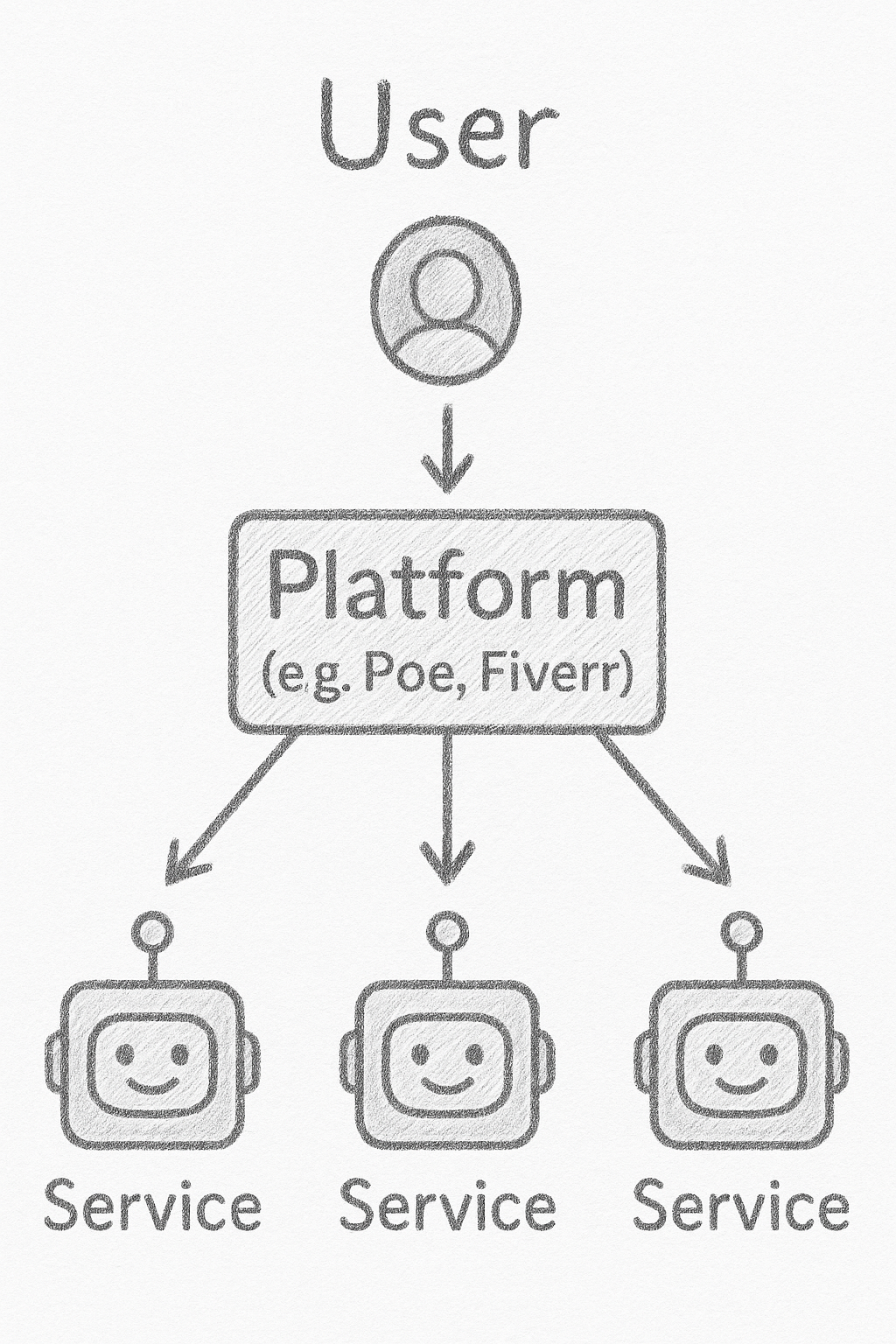Micro-SaaS: Making "Pay-Per-Task" AI Agents a Reality
Infrequently used digital services are often locked behind subscription models, leading to "subscription fatigue." As consumers grow weary of recurring fees for rare uses, innovative solutions like Micro-SaaS and the platform economy offer alternatives. By enabling pay-per-use access while mainta...

Many essential services in our day-to-day (physical) lives operate on a simple pay-as-you-go basis, particularly those we use infrequently. For instance, when our car requires a one-off repair or an emergency plumbing issue arises, we usually hire a specialist for that particular job.
These transactions are generally straightforward and often don't require us to create an account or share extensive personal details in order to access specialised skills when needed. This model is a cornerstone of traditional commerce.
However, the digital landscape of the new economy has taken a somewhat different turn. Many online services seem perpetually hungry for subscriptions. Users are pushed towards monthly or yearly commitments, even for services they only use sporadically.
It's not unheard of to find yourself inadvertently paying $100 for a yearly subscription to a service that you only use once or twice a year for a simple task like converting a Word file to PDF, all because it was tied to a recurring payment. The point is that the model often doesn't align with infrequent but necessary use.
The Challenge of Infrequent Use Services
This issue of infrequent use is a critical challenge for many digital services. Consider, for example, specialized consultancy, specific document preparation services, or even advanced data recovery tools. Users might need such a service critically, but only once a year, or even less frequently, not on a consistent, recurring basis.
It would be a shame to abandon highly innovative services just because of a low concentration of potentially high, widespread, infrequent demand for them.
This low frequency of use presents considerable difficulties in establishing viable pricing strategies and subscription models. For services that are essential yet not regularly needed, traditional monetization approaches often prove inadequate.
This issue is not unique; many consumers report "subscription fatigue," indicating a growing weariness with numerous recurring charges for services they use sporadically (as discussed by platforms like Chargebee: https://www.chargebee.com/blog/subscription-fatigue-is-real/).
Why These Services Matter
Many potentially valuable ideas, especially in the current AI-driven innovation landscape, face this same challenge. These are services that, while used infrequently, deliver significant value at the moment of need. Discarding such concepts solely due to incompatibility with high-frequency subscription models would be a missed opportunity, as they often represent a "win-win-win" scenario: beneficial for the service provider, the customer, and the broader ecosystem.
An example like needing an expert to validate a complex home repair quote, or requiring specialized software for a one-off creative project, illustrates this:
these services address widespread needs, affecting a large population, even if individual use is infrequent.
The Problem with Current Business Models
Standard subscription models are ill-suited for infrequently used services, as customers are reluctant to pay recurring fees for intermittent utility. This can lead to perceived poor value from the customer's perspective.
Alternatively, one-time payment models, while seemingly straightforward, introduce other frictions:
- Users are often required to register and provide payment information for each distinct service, creating a repetitive and cumbersome process.
- Sharing personal and payment data across multiple platforms raises significant privacy and security concerns, as each entity becomes responsible for data protection.
- The user experience is often degraded by the need to navigate multiple sign-up and payment procedures.
Micro-SaaS
One potential solution is the concept of Micro-SaaS (micro software as a service). These are services that offer genuine value and address a real market need, but are not extensive enough to justify a standalone subscription model.
These services are often too niche for large enterprises, but they offer targeted utility. Industry observers have elaborated on the characteristics and potential of Micro-SaaS businesses. There are various alternative implementation models that can facilitate the effective delivery of such services.
The Central Approach: The Platform Economy
One viable implementation is through a platform economy model. In this structure, a centralized provider manages user registration, payment processing, and other administrative overheads. Service creators can then offer their specialized services on a pay-per-use basis through this platform.

This trend is evident in the business models of platforms such as Fiverr and Poe, which illustrate the shift towards centralized platforms for a variety of digital services. These include APIs, data services, and more recently, agents and chatbots. as a service, enabling freelancers to generate income, often with a degree of passive revenue potential.
For instance:
- Poe allows AI bot developers to monetize their creations via a per-message pricing system or through revenue sharing from premium subscriptions initiated via their bots. This helps creators cover operational costs and earn from their AI applications.
